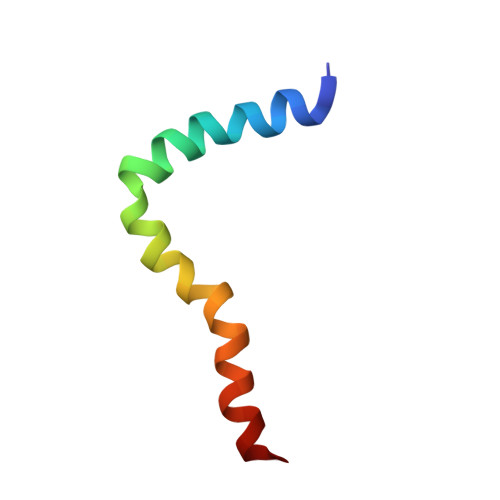Structural basis for the bacterial membrane insertion of dermcidin peptide, DCD-1L.
Nguyen, V.S., Tan, K.W., Ramesh, K., Chew, F.T., Mok, Y.K.(2017) Sci Rep 7: 13923-13923
- PubMed: 29066724
- DOI: https://doi.org/10.1038/s41598-017-13600-z
- Primary Citation of Related Structures:
2NDK - PubMed Abstract:
Human dermcidin (DCD) is an antimicrobial peptide secreted constitutively by sweat glands. The anionic derivative, DCD-1L, comprises of the N-terminal 47 residues of DCD and one additional leucine residue. A previous NMR structure of DCD-1L in 50% TFE showed a partial helical conformation, and its crystal structure in the presence of Zn 2+ outlined a hexameric linear α-helical bundle. Three different models to describe membrane insertion were proposed but no conclusion was drawn. In the current study, the NMR structure of DCD-1L in SDS micelles showed an "L-shaped" molecule with three fully formed α-helices connected by flexible turns. Formation of these helices in DCD-1L in the presence of POPG vesicles suggests that the acidic C-terminal region of DCD-1L can suppress the binding of DCD-1L to POPG vesicles at basic but not acidic pH. Mutation of charged residues on the N-terminal and C-terminal regions of DCD-1L cause differences in POPG binding, suggesting distinct functional roles for these two regions. Charged residues from these two regions are also found to differentially affect Zn 2+ coordination and aggregation of DCD-1L in the absence or presence of SDS, as monitored by 1D NMR. Our data agrees with one of the three models proposed.
- Department of Biological Sciences, 14 Science Drive 4, National University of Singapore, 117543, Singapore, Singapore.
Organizational Affiliation:
















